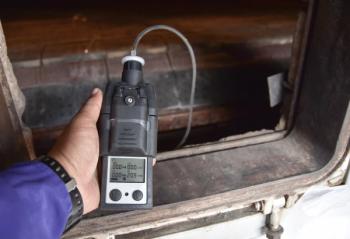
Luminescent Coordination Polymers: Novel Materials for Environmental Pollution Detection
Yan’an University researchers publish findings in Spectrochimica Acta Part A: Molecular and Biomolecular Spectroscopy about three new luminescent coordination polymers that could be used in environmental protection efforts.
Environmental sustainability and protection is a hot topic right now. Preserving the environment requires methods that can detect contaminants effectively. In a recent study published in Spectrochimica Acta Part A: Molecular and Biomolecular Spectroscopy, lead author Mei-Li Zhang and the research team at Yan’an University introduced three new luminescent coordination polymers (LCPs) designed to improve detection of environmental contaminants (1).
The study examined three LCPs. These three LCPs exhibited distinct structures, with LCP 1 and 3 forming in a one-dimensional (1D) structure, whereas LCP 2 takes on a two-dimensional (2D) structure (1). Utilizing phenylenediacetic acid isomers and 1,3,5-tris(1-imidazolyl) benzene (tib), the researchers synthesized these materials, each offering unique properties for pollutant detection (1).
LCP 2 received significant attention because it contained enhanced sensitivity to trace analytes. The reason for this is because LCP 2 had a larger specific surface area compared to LCPs 1 and 3 (1). The detection limits of LCP 2 for various contaminants, such as Fe3+, nitrobenzene (NB), chloramphenicol (CAP), and pyrimethanil (PTH) outperform existing literature values, demonstrating its potential as a highly effective fluorescent probe (1).
Real sample testing further validated the efficacy of LCP 2, showing spiked recoveries for the detection of pyrimethanil in grape skins, with minimal relative standard deviation (RSD) (1).
The fluorescence quenching mechanism observed in these LCPs is attributed to a combination of photoelectron transfer (PET), resonance energy transfer (RET), and competitive absorption (CA), elucidating the intricate processes underlying their sensing capabilities (1).
This article was written with the help of artificial intelligence and has been edited to ensure accuracy and clarity. You can read more about our
Reference
(1) Ma, Y.-F.; Liu, X.-L.; Lu, X.-Y.; Zhang, M.-L.; Ren, Y.-X.; Yang, X.-G. Zn-coordination Polymers for Fluorescence Sensing Various Contaminants in Water. Spectrochimica Acta Part A: Mol. Biomol. Spectrosc. 2024, 309, 123803. DOI: 10.1016/j.saa.2023.123812
Newsletter
Get essential updates on the latest spectroscopy technologies, regulatory standards, and best practices—subscribe today to Spectroscopy.





